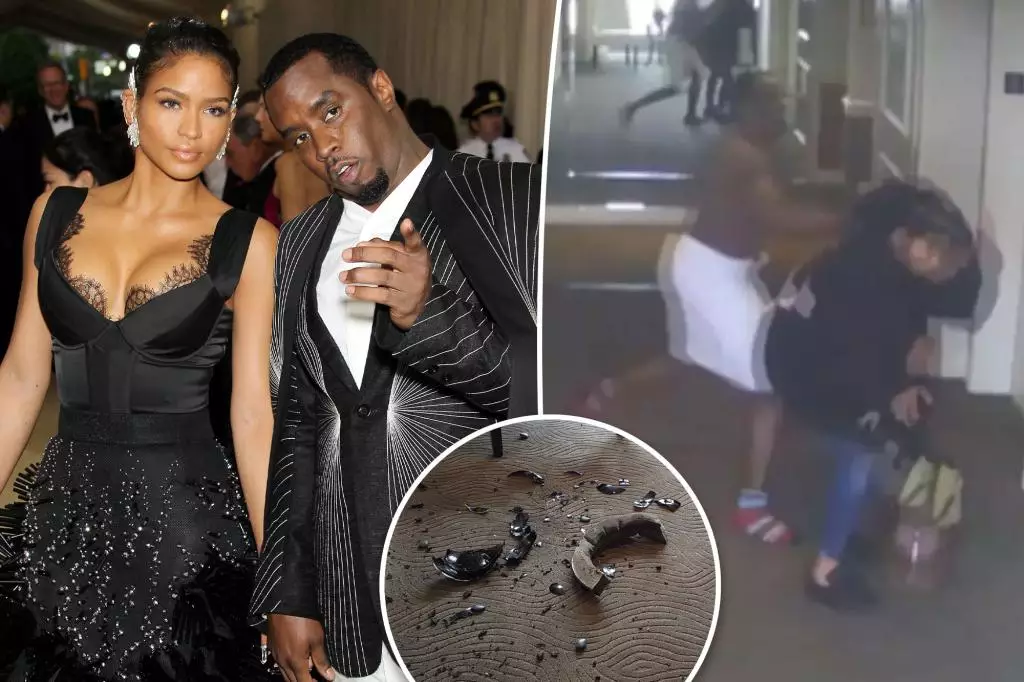In an era where celebrity culture is often revered, the unsettling realities of interpersonal relationships within the public eye can shatter the illusion of glamour. The ongoing trial of Sean “Diddy” Combs reveals a distressing picture that not only highlights the danger of unchecked power but also examines the psychological and physical trauma endured by victims of abuse. Cassie Ventura’s harrowing testimony places the spotlight on this crucial issue, exposing the layers of manipulation and control that often remain hidden behind lucre and fame.
Ventura, an established figure in her own right, has bravely retold the traumatic experiences faced during her decade-long relationship with Combs, asserting that he controlled every facet of her life. Her testimony is a crucial reminder that fame can sometimes mask unspeakable pain, where power dynamics shift dangerously, placing the victim in a corner of fear and doubt.
The Disturbing Evidence
The trial’s proceedings unveiled graphic images that painted a clear picture of the violence that allegedly manifested behind closed doors. Gruesome photographs of a broken vase—an object turned into a weapon—served as grim artifacts highlighting the brutality of the alleged attack. Ventura’s recollection of that violent encounter further emphasized the fragility of safety within relationships that, on the outside, might seem enviable.
It is jarring to see visual evidence being presented in a courtroom, as it punctuates words with stark reality. Witnessing the broken remnants of a vase thrown in anger symbolizes much more than mere property damage; it encapsulates the emotional wreckage and the fear that victims must navigate. Ventura’s bruised lip, documented via cellphone, acted as further testimony to the physical assaults she suffered. The heart-wrenching fact that she hesitated to reveal the assailant’s identity to police adds another layer to the complex narrative of fear and shame that often envelops victims of domestic abuse.
The Role of Surveillance Footage
Perhaps the most compelling piece of evidence is the full, unedited surveillance footage of the incident, which initially circulated in a truncated form. The raw portrayal of Combs’ aggressive behavior—chasing Ventura, dragging her down hallways, and throwing objects—strips away any façade of celebrity reticence. This footage presents a sobering reality check on the consequences of violence. It is imperative to recognize that these moments are not isolated; they reflect a broader pattern of behavior that is rooted in the dynamics of control and fear.
What is particularly disconcerting here is not just the actions of Combs, but also the implications of such behavior and the responses from onlookers, including security personnel. The testimony from the hotel security guard, who revealed that Combs attempted to silence him with a bribe, underscores the complicity that often exists within systems intended to protect, leaving victims vulnerable and unheard.
A Legal System in Flux
As Ventura proceeds as a key witness against a figure as powerful as Combs, it raises critical questions about the efficacy of our legal systems in handling high-profile cases. Issues of credibility and victim-blaming are compounded when a celebrity is involved, often leading to challenges in obtaining justice. Yet, the complexity of trauma should not overshadow the critical importance of accountability for abusers, regardless of their stature. Ventura’s decision to sue Combs for rape and abuse serves as both a courageous stand and a beacon of hope for others who may find themselves trapped in similar situations.
The multifaceted nature of Combs’ legal challenges—spanning sex trafficking charges to multiple allegations of abuse—paints a picture of a man whose influence may have allowed him to operate above societal norms for far too long.
Challenging the Narrative Around Masculinity and Power
As the trial advances, it is essential to challenge the narratives that often accompany discussions of masculinity and power. The prevailing attitudes towards celebrity culture must evolve to reflect the realities of abuse. Day by day, as more details surface, there is an urgent need for society to scrutinize and challenge the behaviors that have been normalized in the name of fame.
The public’s role in supporting victims and dismantling the shield that protects abusers is pivotal. While the trial may serve to propel issues of domestic violence and sexual abuse into the spotlight, it also urges collective introspection into our societal values. The bravery displayed by Ventura should inspire action, empathy, and a reassessment of how we view abuse within the context of celebrity and culture. Ultimately, it beckons us to demand a shift—one where the protection of victims supersedes the allure of fame.

